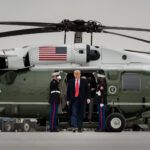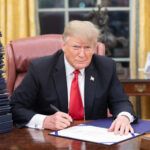After New START: Challenges and opportunities for 21st century arms control
By Jonathan Pearl | February 18, 2011
Now that the New Strategic Arms Reduction Treaty (New START) has finally entered into force, how will the Obama administration achieve further bilateral nuclear reductions with Russia? With tremendous effort, public engagement, and compromise. Negotiating a follow-on agreement promises to be difficult and divisive — even more so than with New START — because it will force both countries to reassess deeply ingrained beliefs about how nuclear and non-nuclear assets affect national security. Washington and Moscow will need to reach compromises on four challenging issues: tactical (nonstrategic) nuclear weapons, missile defense, conventional missile technology, and space security. Though contentious negotiations lie ahead, the Obama administration can take several near-term steps to increase the chances of long-term success at the negotiating table.
Tactical nuclear weapons. Great disparity exists between the number of Russian and US tactical nuclear weapons (approximately 2,000 and 500, respectively) as well as how the two states perceive these weapons. To Russia — with its extremely long land borders, shrunken military budgets, diminished industrial capacity, and reduced conventional military capabilities — tactical nuclear weapons are seen as essential to national defense.
In contrast, reports indicate that the role of tactical weapons in the US arsenal continues to decline. Further complicating matters, Washington sees the Russian nonstrategic arsenal as vulnerable to theft and as a potential threat to NATO defenses and alliance unity. This latter view reflects the lingering concerns of some NATO allies regarding Moscow’s intentions; it can also be attributed to the fact that the “reset” in US-Russian relations is still in its early stages.
The incongruity between US and Russian perceptions of tactical nuclear weapons will seriously complicate future arms control negotiations. Moscow’s willingness to compromise will depend on its ability to either imagine alternatives to heavy reliance on nonstrategic weapons or to consider what it would trade to maintain its large tactical arsenal in the short term. To resolve differences, Washington must be similarly creative, perhaps exploring options that offer flexibility instead of strict force parity — allowing Washington to keep (under an overall warhead limit) more non-deployed strategic warheads while Moscow keeps more tactical weapons, for example.
Missile defense and conventional capabilities. The Obama administration, like the Bush administration before it, views the US missile defense program as an indispensible component of national security that someday will offer protection against hostile nuclear-armed regimes (North Korea, for example, or potentially Iran). Washington also hopes that an effective missile defense umbrella will reduce the risk that its non-nuclear allies in the Middle East and East Asia will build their own weapons in response to regional threats and a shrinking US arsenal. Russia, however, harbors suspicions that Moscow — not Pyongyang or Tehran — is the true target of US and NATO missile defense efforts. Despite some positive movement in the direction of Russia-NATO cooperation on missile defenses, a true resolution remains a long way off.
Similarly, Washington’s plans for a prompt global strike (PGS) program to develop precision conventional missile capabilities have led to misgivings in Moscow. Washington views PGS as critical to national security because of its potential to help the United States maintain deterrence and quick-strike options in the shadow of shrinking strategic nuclear forces. Yet Moscow remains skeptical because of the dual-use potential of advanced conventional delivery systems, the risk of mistaking conventionally armed missiles for nuclear-armed ones in mid-flight, and the added military might that PGS would give Washington.
To reach a compromise on missile defense and PGS, Washington and Moscow may again have to stretch the limits of their strategic visions. Moscow may need to move past demands for a strictly equal role in European missile defense and its wariness of PGS, given the perceived strategic needs of Washington and its allies. For its part, Washington should continue to explore ways to leverage increased technical and operational transparency and the development of cooperative security architectures to allay some of Moscow’s concerns.
Space security. American policy makers have long been wary of including space security on the arms control agenda. This reluctance stems from concerns about verification, a desire to protect space assets, and underdeveloped thinking on national security space policy. Indeed, both the Obama administration’s National Space Policy and its National Security Space Strategy (NSSS) largely neglect the linkages between arms control and space security, although the NSSS recognizes that the United States must be ready to move past its hesitancy when equitable, verifiable space-related arms control measures are put forward.
Absent such measures, the Obama administration must continue to vigorously promote bilateral and multilateral dialogues on space security in the short term. This is particularly important in the bilateral context given Russian Foreign Minister Sergei Lavrov’s insistence that multilateral talks on space security are a prerequisite for moving forward with a New START follow-on agreement. (European Union members are also pushing to develop robust international guidelines for protecting space access and assets, as well as for managing increasingly dense space traffic to prevent accidents and minimize orbital debris.) Even if Moscow backs down, the increasing reliance of US military, industry, and civilians on space technology makes it imperative to lay a foundation for working out such complex and critical issues.
Next steps must begin now. The Obama administration is already looking to resolve the above challenges and has suggested a timetable for next steps in US-Russian arms control negotiations, but even in the best-case scenario, follow-on negotiations will take years. Despite this extended timeframe, however, the administration would be wise to learn from its experience with New START by taking three near-term steps to help pave the way forward.
- Domestic diplomacy. The more a follow-on agreement represents a true transformation in strategic thinking, the harder it will be to secure support for it. Yet a transformation is precisely what the next round of bilateral talks requires. To maintain and build a constituency for future negotiations, the Obama administration must consult early and often with congressional proponents of New START, paying special attention to winning new advocates (an important task since the pool of supporters was depleted by retirements and electoral defeats). The administration should also continue to engage the public. In decades past, public familiarity with the issues has been instrumental in winning congressional support for arms control measures and even in forcing reluctant administrations to pursue arms control negotiations. The dialogue over New START helped reintroduce a post-Cold War public to these issues. In an era in which the fast-paced news cycle and social media are profoundly influencing politics, opportunities abound to keep arms control at the center of public discourse. The administration must capitalize on this.
- Strategic evolution. Charting a new strategic course requires the development of new strategic thinking; however, not enough open-source strategic analysis has been devoted to managing stability in a world with very low numbers of nuclear weapons. The administration must begin to explain to domestic audiences its thoughts on how strategic stability can be maintained and national security protected with lower levels of nuclear weapons and in situations that push the envelope of strict parity. Arcane details must be translated into clear and accessible principles. Washington must ensure the continued effectiveness of US deterrence capabilities at reduced arsenal levels and reassure its allies of the continued US commitment to their security. Strategic evolution also requires the development of a coherent, comprehensive, and effective space policy. US national security is inextricably linked to space developments, and in the years to come this dependence will increase greatly. There is no simple solution, but the principle is straightforward: It would be folly to reduce nuclear arsenals without guaranteeing the security of space assets necessary for the operation of US conventional precision weapons and, indeed, an expanding array of US military and civilian activities.
- Investing in the future. The Obama administration repeatedly emphasizes the need to invest in America’s future. It is essential that nuclear weapons — which will be a part of that future — be kept safe and secure. Vital to achieving this is the US nuclear complex, whose responsibilities extend to nonproliferation and whose non-nuclear research contributes greatly to homeland security, the US technological edge, and US economic strength. The administration must therefore continue to pledge both fiscal and political support for the complex’s important work, even as it works with the complex to refine and update its mission. In the absence of immediate political incentives, this support may have the ancillary benefit of helping to convince skeptics of the administration’s commitment to nuclear security. Congress must partner with the administration in this effort, even as it addresses substantial budgetary pressures.
The United States and Russia hold the vast majority (95 percent) of the world’s remaining nuclear weapons, and President Obama has pledged to push toward nuclear zero. Achieving deep arsenal reductions is possible, but only if the United States takes determined near-term steps to pave the path forward. Failure to do so would risk undermining further nuclear reductions, as well as the broader recalibration of security policy that twenty-first century challenges fundamentally require. In this sense, the Obama administration’s challenges are also opportunities — if it addresses them now.
Together, we make the world safer.
The Bulletin elevates expert voices above the noise. But as an independent nonprofit organization, our operations depend on the support of readers like you. Help us continue to deliver quality journalism that holds leaders accountable. Your support of our work at any level is important. In return, we promise our coverage will be understandable, influential, vigilant, solution-oriented, and fair-minded. Together we can make a difference.
Topics: Opinion















